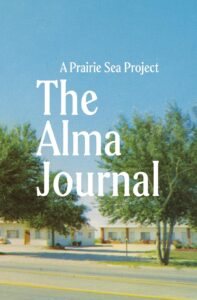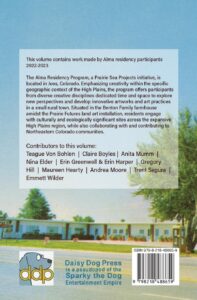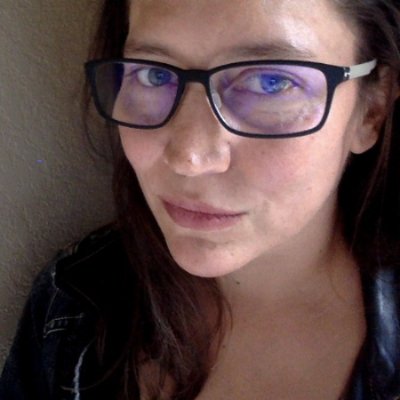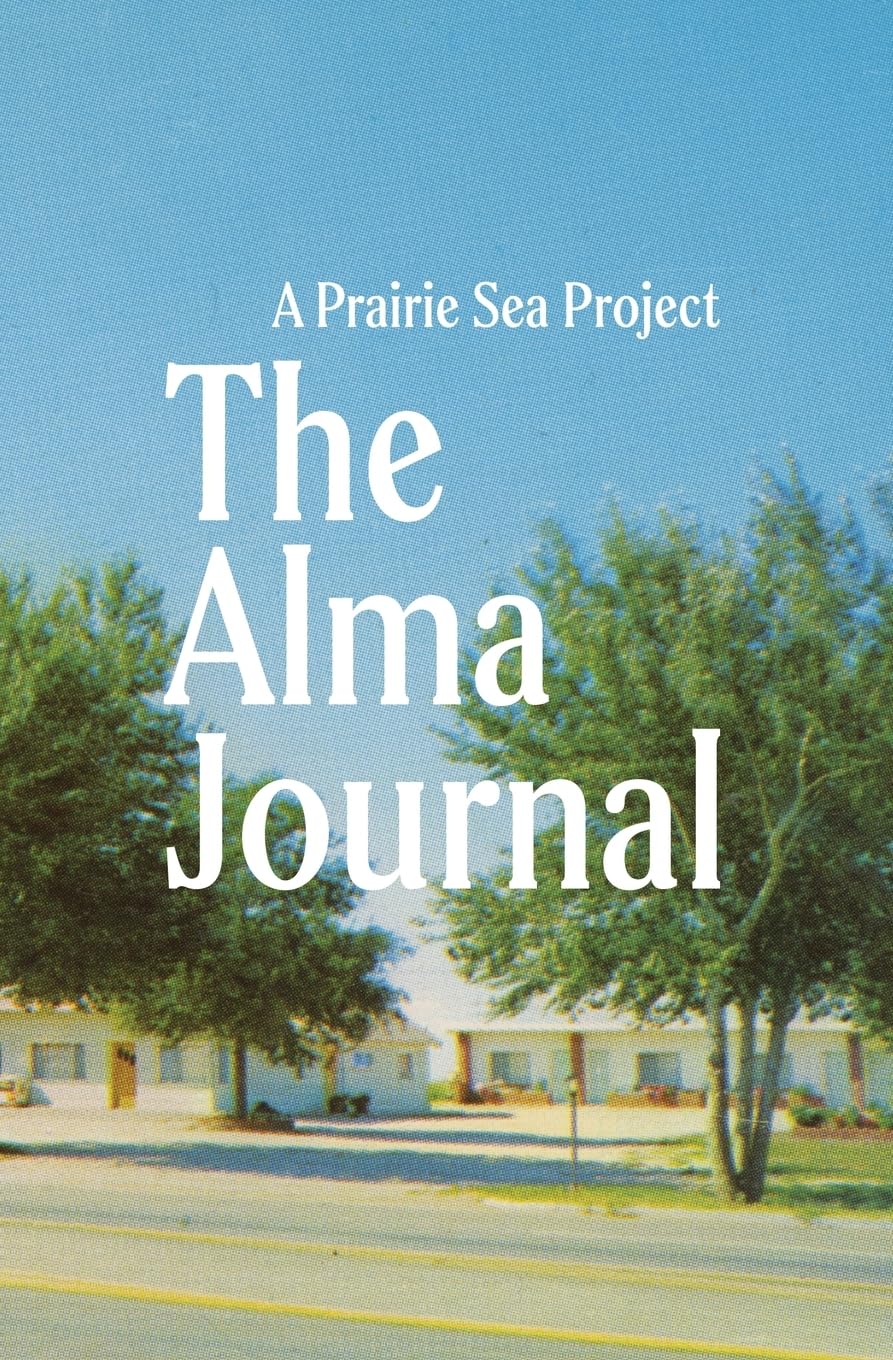Prairie poetics
An anthology of work by writers in the Alma Residency Program of Joes, Colorado
An anthology of work by writers in the Alma Residency Program of Joes, Colorado
If you’ve never heard of the tiny town of Joes in northeast Colorado, that makes sense. There are, after all, only 80 or so people living in what could pretty easily and accurately be described as the middle of nowhere on the High Plains. The precise population of Joes is discussed a few times in The Alma Journal: A Prairie Sea Project, published by the Prairie Sea Projects Initiative through the Alma Residency Program, a writers residency based in Joes. With no apostrophe before the s, Joes does not belong to a guy named Joe. Nor are there multiple identifiable Joes living there. The Alma Journal reflects, however, through its eleven contributors that there’s actually quite a lot going on there. The anthology provides not only a good instruction manual of what to look out for in Joes, should you opt to go. It also serves as an outstanding primer on how, if paying good attention, there’s never actually nothing going on anywhere you may be.
 This comes through quite nicely in the anthology in “Once More to the Rural” by prolific writer and University of Colorado Denver Associate Professor Teague von Bohlen. His day-by-day, week-long diary of his life in Joes includes philosophical musings along with landscape photos taken from his car. Flat prairie, big dramatic sky, rearview mirror reflecting more of the same, and a two-lane road with no other cars accompany musings like this: “We are both blessed and cursed by memory, because we lose something with each moment that passes. Mark the moment, right now, as you read this. That moment will never come back. Neither will this one. Or this one. It might seem like we’re wasting time right now, you and I, but no moment is ever wasted. Not really. Loss isn’t negative. It isn’t positive. It just is. Time is neutronic, and so is its passing.” Babbling about nothing and stating a profound truth at the same time come quite naturally to von Bohlen.
This comes through quite nicely in the anthology in “Once More to the Rural” by prolific writer and University of Colorado Denver Associate Professor Teague von Bohlen. His day-by-day, week-long diary of his life in Joes includes philosophical musings along with landscape photos taken from his car. Flat prairie, big dramatic sky, rearview mirror reflecting more of the same, and a two-lane road with no other cars accompany musings like this: “We are both blessed and cursed by memory, because we lose something with each moment that passes. Mark the moment, right now, as you read this. That moment will never come back. Neither will this one. Or this one. It might seem like we’re wasting time right now, you and I, but no moment is ever wasted. Not really. Loss isn’t negative. It isn’t positive. It just is. Time is neutronic, and so is its passing.” Babbling about nothing and stating a profound truth at the same time come quite naturally to von Bohlen.
Musing on the specifics of actual people on another day, von Bohlen demonstrates that he’s actually a connoisseur of America’s small towns, having lived in several throughout his life. His boiling down of church-specific tribalism aptly describes firmly established behaviors among various stripes of Christians. “We laugh at each other’s foibles,” he writes. “The Methodists chuckle about the Lutherans having to sing everything. The Lutherans rib the Baptists for putting eggs in the potato salad. The Baptists don’t joke, but do comment that everyone else sure seems to have time to do it.” To von Bohlen, judging clearly isn’t an activity performed exclusively by God. And the established distinctions among denominations serves as an organizing social principle discernable only to the initiated.
Joes has been designated as a CDP by the United States Census Bureau, meaning that it’s a census-designated place. The official population of the moment stands at 82. Despite the distinctive lack of inhabitants, Joes does have internet access. Developmental editor, ghostwriter, and publishing consultant Anita Munn demonstrates this in her contribution, “The Oasis,” a series of vignettes accompanied by drawings that describe the doings of various plants and animals. She recounts a tale of young raccoons having “masked companions” rooting through the trash. “LOLOL. She has a point, bro,” says one raccoon. “But seriously, we got this,” says another. “Just a little higher and I can reach. Oooh, I smell pizza. Pepperoni and anchovies.” Oddly enough, for anyone who has ever watched raccoons sneakily digging around for food, this snippet of dialogue might ring somewhat believable. Munn’s contribution concludes with instructions on how Journal readers might create their own such observation-driven stories, accompanied by footnotes with factoids pertaining to the specific creatures she has observed.
Nina Elder, a co-founder of the women’s climate leadership initiative the Wheelhouse Institute and creator of many things pertaining to the  natural world, contributes “Everything is a Cloud.” Part of this entry is a drawing of many handwritten terms boxed in rectangles that make a larger, page-scale rectangle. The piled shapes contain the likes of “brains,” “lotion,” “filing cabinets,” “romance,” “sediment,” and “gas stations,” among many other real things that may or may not exist in or as clouds. An accompanying photograph of a hand reaching upward toward clouds might also inspire readers of the Journal to consider what common and uncommon stuff might be found by simply going outside and looking at the sky.
natural world, contributes “Everything is a Cloud.” Part of this entry is a drawing of many handwritten terms boxed in rectangles that make a larger, page-scale rectangle. The piled shapes contain the likes of “brains,” “lotion,” “filing cabinets,” “romance,” “sediment,” and “gas stations,” among many other real things that may or may not exist in or as clouds. An accompanying photograph of a hand reaching upward toward clouds might also inspire readers of the Journal to consider what common and uncommon stuff might be found by simply going outside and looking at the sky.
The grand accomplishment of the Journal, other than illustrating some specifics of Joes and its vast and remote surroundings, is a series of lessons in the importance of paying attention to where you are and looking around. Gregory Hill, a fiction writer and flammable amplifier-builder, gives us “Successful Artistry in Three Parts: More Lessons in Failure.” This first-person account of dueling self-doubt and high-mindedness occurs as Hill navigates the Englewood Library Author Fest as a presenter dealing with assorted egos and manifestations of disorganization. He uses mantras to render himself steady. “Don’t let the bitterness show,” goes the first. Followed by “Exchange your mouth for your ears.”
And given that all people essentially and similarly go through life on a daily basis contending with clashing distraction and inspiration, these ideas—like all the keen observation skills evidenced throughout The Alma Journal—make it seem a superb idea for all of us to stand and notice where we are. And a poignant suggestion that in so doing, sometimes the miraculous becomes obvious. Not unlike the oddly oceanic appearance of the decidedly landlocked, mostly uninhabited prairie.
Click here for more from Sarah Valdez.

